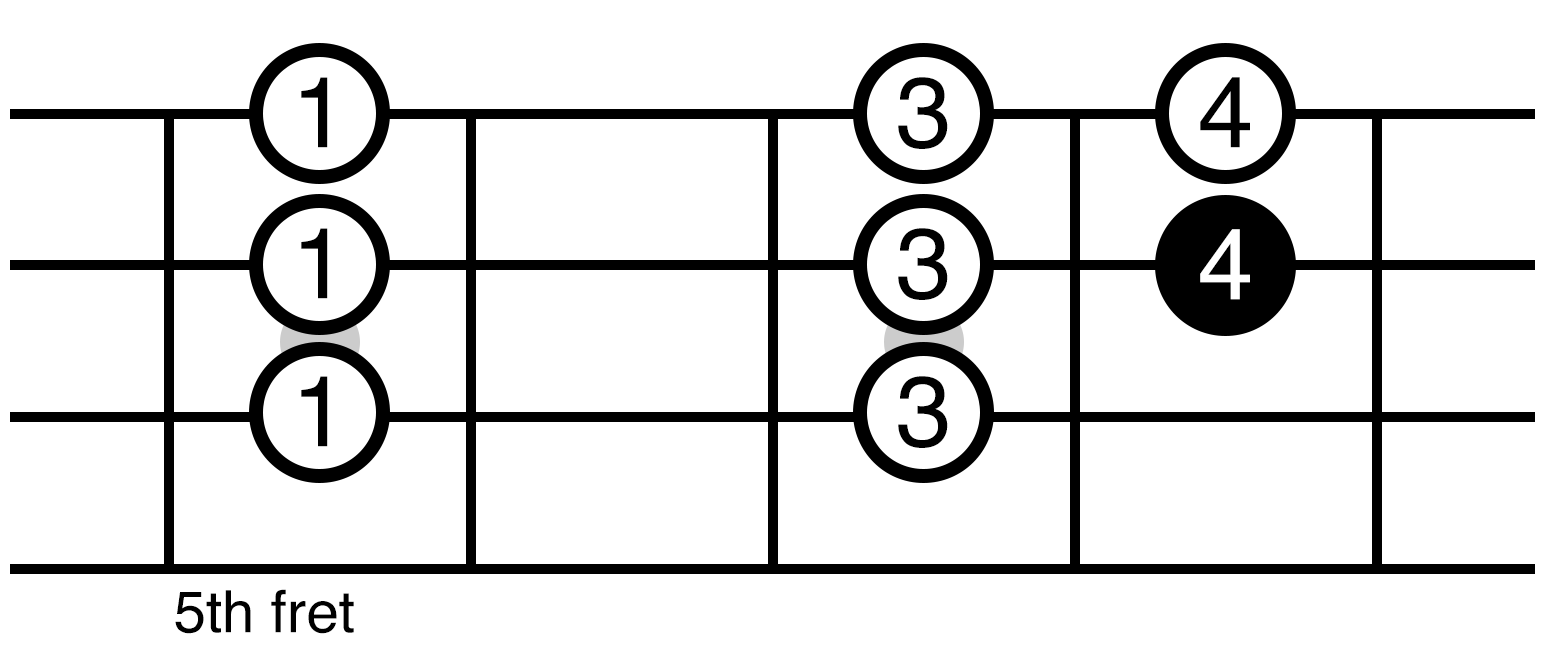So far we’ve looked at how to play C major scale in position #1 and position #2 on the ukulele fretboard. If you haven’t already completed those lessons, do that before moving forward!
In this lesson, continue to learn C Major Scale Position #3 on ukulele.
By doing this, you learn the natural notes across the ukulele fretboard (A, B, C, D, E, F, G). If you know these notes, it’s easy to fill in the sharps and flats later. In addition, learning these notes is the basis of playing melodies, solos and riffs on the ukulele.
The C major scale is where it all begins!
Learn how to play Position #3 now.
Watch the video to learn the C major scale in position #3 on ukulele and keep reading to discover the scale diagrams and notes in the position.
How to Play a C Major Scale in Position #3 on Ukulele
In the first position, the scale started and ended on a C note – the root note of the C major scale.
In the second position, the scale started and ended on a D note – the second scale degree in a C major scale.
For this third position, you continue with the theme of working up the fretboard and start and end the scale on the F note – the fourth scale degree. This means even though this scale position starts and ends on an F note, it’s still a C major scale position because it contains all the notes of a C major scale (C, D, E, F, G, A, B).

C Major Scale Position #3 sheet music and ukulele tab
C major scale in position #3 spans the 5th to 8th frets.
For the fretting hand, this means you assign the index finger (represented by the number 1) to the 5th fret, middle finger to the 6th fret (represented by the number 2), ring finger to the 7th fret (represented by the number 3), and little finger to the 8th fret (represented by the number 4).

C Major Scale Position #3 ukulele fretboard diagram
Pay specific to attention to where the root note of the scale falls – the C note on the 8th fret of the E-string.
Why Learning Scale Positions is so Important
Learning the ukulele fretboard has to start somewhere and this is where it all begins.
When you understand scales, you can do things like:
- Figure out how to fingerpick the melody of a song on the fretboard
- Discover how to build chords across the fretboard
- Explore how to riff and improvise solos across the fretboard (like in the blues or jazz)
All of these things don’t happen at once but you’re taking the essential important steps to move towards these.
Learning scales requires a lot of hard work and effort with memorizing these positions and committing them to muscle memory. This is first required before you do those things above. Remember these scale positions require lots of repetition to become a part of your playing.
In fact, make the positions you’ve learned so far a regular part of your practice warm up each day. In a week, you’ll be surprised at how well you can navigate between the positions across the fretboard!
There’s still two more C major scale positions to learn. When you’re ready, move on to learning the next position.


Leave a Reply